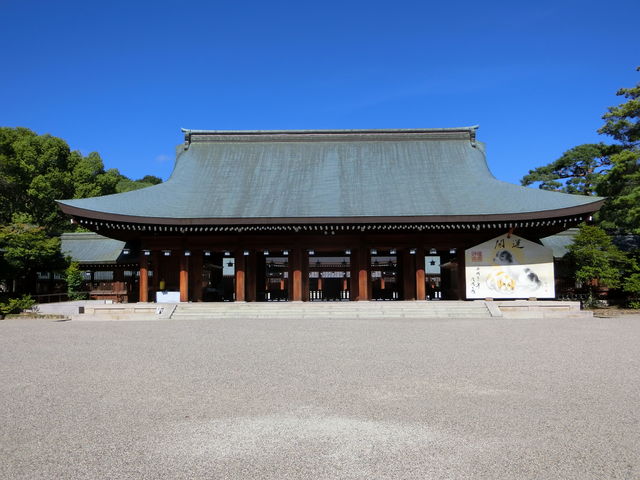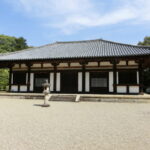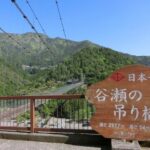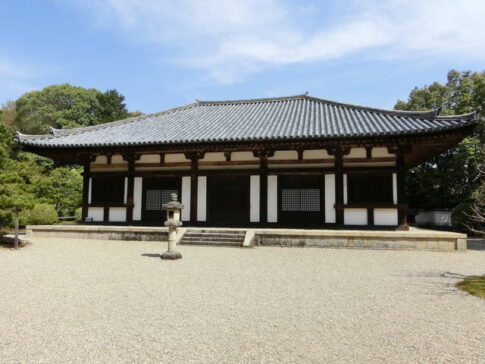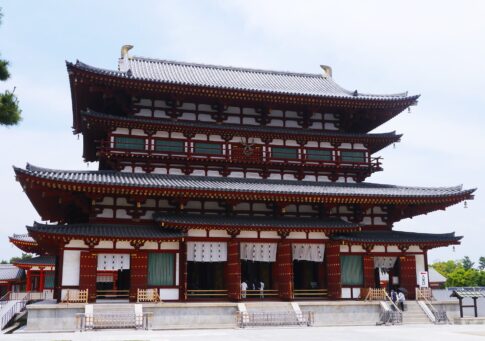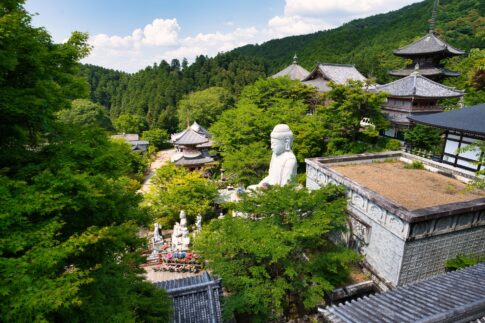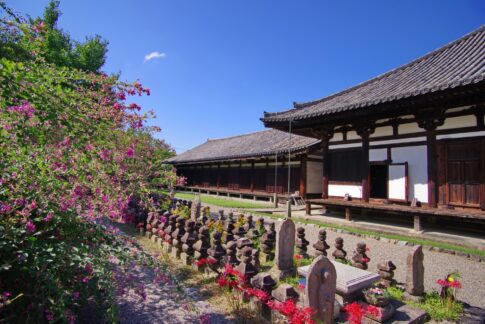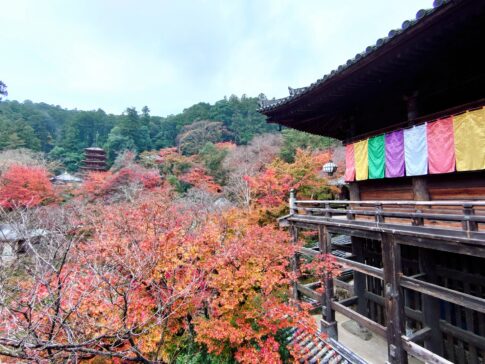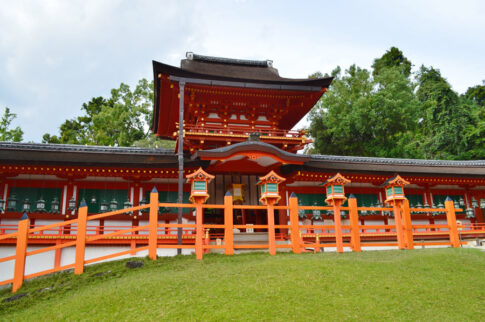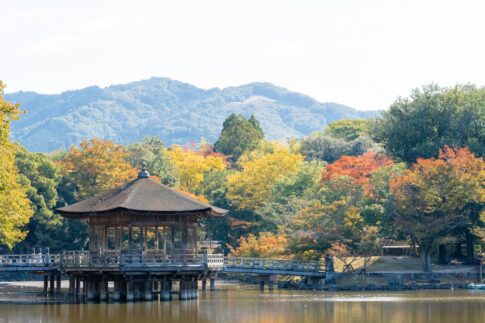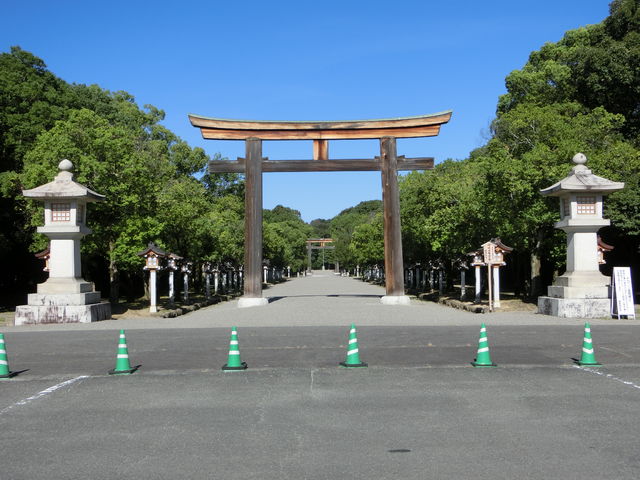
Kashihara is the sacred place of the founding of the nation.
It is said that this is where the nation of Japan began.
If you are interested in Japanese history, this is an amazing place.
What you need to know before visiting Kashihara Shrine
1. Basic Information
Kashihara is the site of the founding of the nation of Japan, and is mentioned in the Nihon Shoki (Chronicles of Japan), which is considered to be the oldest authentic history of Japan.
Kamuyamatoiwarehikohohodeminosumeramikoto, a descendant of Amaterasu, founded Kashihara Palace at the southeastern foot of Mount Unebiyama.
Unebiyama at the southeast foot of Kashihara Palace. He ascended to the throne as the first Emperor of Japan in the first year of the second millennium A.D., some 2,680 years ago.
Kashihara, the birthplace of Japanese history and culture, can be said to be the origin of Japan.
2. History of Kashihara Shrine
Unebiyama, there were many mausoleums of emperors and ruins of ancient times, but the site of the Kashihara Palace at the southeast foot of the mountain had been a field, with no evidence of any facilities having been built there.
It is thought that this is because the capital of the Shang dynasty was only for one generation and was moved one after another, and when a new emperor built a new palace, the old palace was removed and reduced to arable land.
It was in 1863, at the end of the Edo period, that Emperor Jinmu’s mausoleum was located at the present site adjacent to the Kashihara Shrine.
The site was subsequently repaired, and in the 1868’s there was a growing movement to investigate and honor the Kashihara Palace site, which led to a series of applications from the private sector for the erection of a monument at the palace site and the construction of the Kashihara Shrine.
In 1889, the Meiji government authorized the construction of the shrine, and two buildings of the Kyoto Imperial Palace, the Kensho (Wise Office) and the Shinkaden (Shrine for the Goddess of Mercy), were given as the shrine buildings.
The relocation was completed in January 1890. In March of the same year, the shrine was renamed Kashihara Jingu Shrine and was listed as a government-owned large shrine.
The Kashihara Shrine was built on the site of the Kashihara Palace on the southeast side of Mount Unebi, where Emperor Kanmu ascended to the throne.
In 1911, in order to maintain the dignity of the Kashihara Shrine and to ensure the sanctity of the palace area, Kashihara Jingu collected donations and undertook a large-scale project to expand the palace area and improve its facilities.
In 1912, a request was submitted to the Minister of the Interior for the expenditure of government funds, and government funds were expended for six years from 1915 to 1920, with an additional appropriation made in 1921.
Later, in 1922, the Imperial Diet approved a plan to expand and improve the shrine in order to further enhance its divine authority, but the Great Kanto Earthquake of 1923 caused the government to cease its expenditures.
However, Nara Prefecture established Unebi Park, the outer garden of the Kashihara Jingu Shrine, and the park served to preserve the dignity and beauty of the palace area.
The maintenance project was completed in 1926 (Taisho 15), and the palace area was expanded approximately 1.8 times from its original size of 20,159 tsubo to 36,600 tsubo.
The shrine has been in existence for over 100 years, and more than a century has passed since its construction, creating a solemn environment that is especially awe-inspiring.
The approximately 530,000 m2 (160,000 tsubo) of the shrine area, which has been preserved as it was before World War II, is lush with more than 76,000 trees planted in celebration of the 2600th anniversary of the founding of Japan, and its abundant greenery is enjoyed by many people.
Today, the Kashihara Shrine, the sacred site of the founding of Japan, is a new mission for the future as a spiritual center for the Japanese people, as many people visit the shrine to pray for new beginnings in life and for good fortune, in order to be blessed by the divine virtues of Emperor Jinmu, who overcame many difficulties to accomplish the great task of founding the nation of Japan.
3. Blessings of Kashihara Shrine
- Good Luck and Blessings
At the age of 45, Emperor Jinmu left the Land of Hyuga (Himukonokuni) and entered the Land of Yamato after a period of six years, establishing his capital in Kashihara, southeast of Mount Unebi.
During this eastward migration, he suffered indescribable hardships, but was able to live nine lives, thanks to the assistance of Amaterasu in realizing the ideal of world peace.
It can also be said that Emperor Jinmu himself was a man of great fortune who was able to accomplish great deeds in spite of various difficulties.
- Health and Longevity
Since his accession to the throne at the Kashihara Palace, Emperor Jinmu has lived to be 127 years old*,
76 years on the throne. This shows how long he lived, and it can be said that Emperor Jinmu himself embodied the ideals of health and longevity that we, the people of all ages, have longed for with all our hearts.
4. The Treasure House
The Treasure House was opened in 2000 to commemorate the 100th anniversary of the shrine’s founding.
On display are the Emperor Meiji’s sword, which has been dedicated to the shrine since its founding, the “Hakugin Octagonal Mirror,” a mirror dedicated to Empress Dowager Shoken, the Empress of the Meiji Emperor, and “Shokei Houkou” by Yokoyama Taikan.
Also on display is “The Forest of Kashihara,” a bronze mirror presented by the then Emperor and Empress in 2018.
5. Songs, Poems, and Dances
Songs composed by His Majesty the Emperor are called gosei, and those composed by members of the Imperial Family other than the Emperor are called mi-uta.
At the Kashihara Jingu Shrine, a kagura dance composed from these poems and poems is performed in front of the shrine.
The Kume Mai, which is closely associated with the deity and is always performed during accession ceremonies at court, is also performed at Kashihara Shrine.
Summary
Kshihara Shrine is the shrine with close ties to the Emperor.
You can feel the sacred atmosphere in this place!
